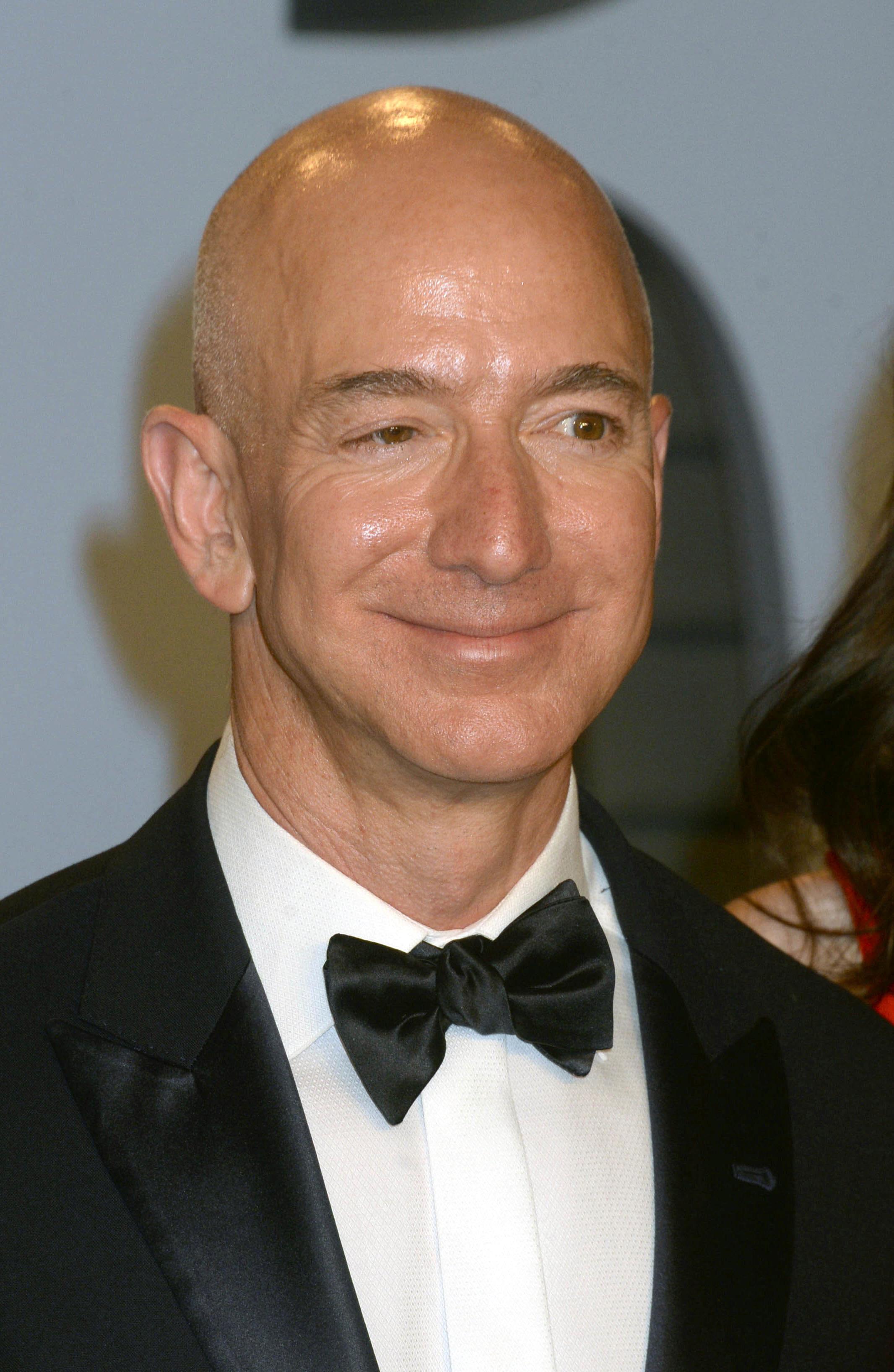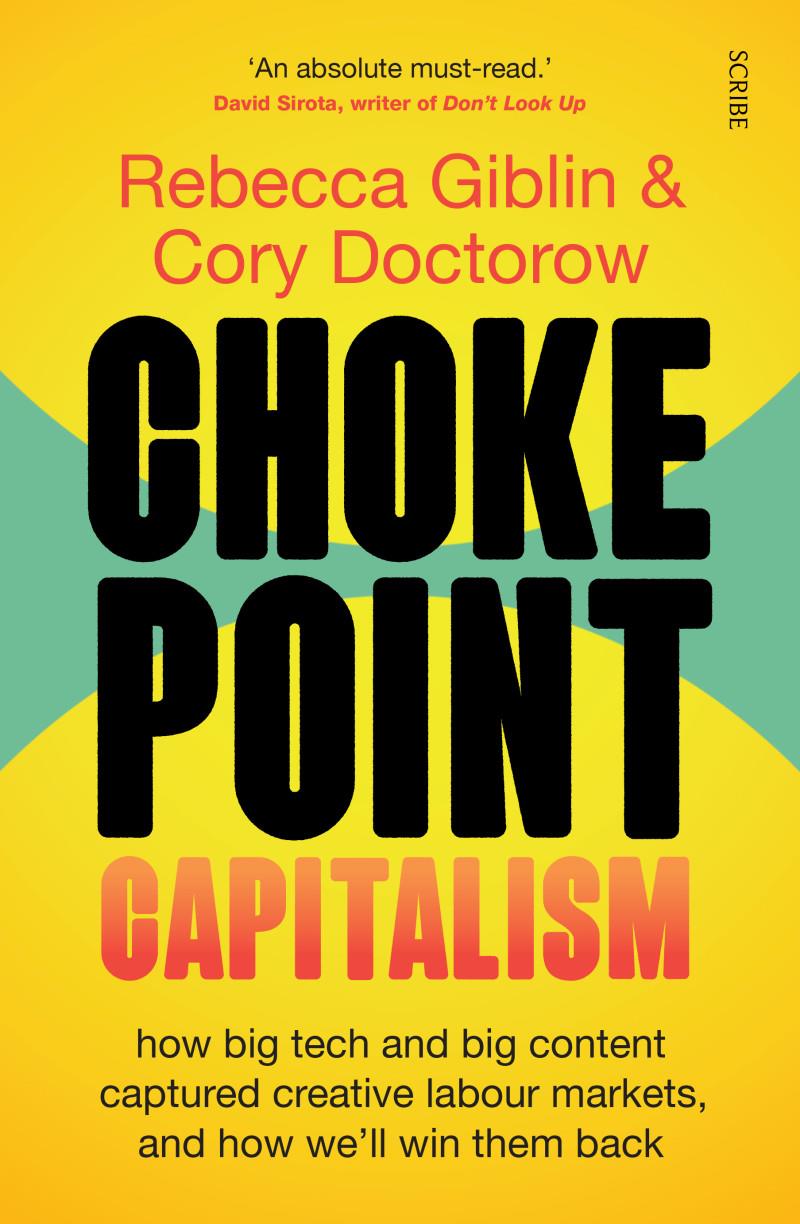(MENAFN- Asia Times) This book speaks to a disenchanted present.
The heady days of internet 2.0, with its anarchic disruption, empowered prosumers, flat hierarchies and sharing economies, are well behind us now. So, too, is the glamor of start-ups and creative entrepreneurs, remaking the self through pure willpower while transforming capitalism from the inside out, one almond latte at a time.
In chokepoint capitalism , Rebecca Giblin and Cory Doctorow have added their detailed knowledge of corporate practice and their legal-technical web-weaving to the growing body of critical work on Big Tech and the stark realities of creative work. The result is a dark portrait of a cultural system captured by billionaires.
The tone is set from the first:
And so on, through radio, live music, artists' agents, games, apps, devices – the whole ecosystem has been captured by huge corporations whose sole purpose is to reduce costs and maximize profits.
“Ecosystem” has a benign ring to it, but, as Giblin and Doctorow argue, a corporation is more like“an immortal colony organism that treats human beings as inconvenient gut flora. It doesn't have a personality and it doesn't have ethics. Its sole imperative is to do whatever it can get away with to extract maximum economic value from humans and the planet.”
'Chickenization'
Chokepoint refers to the mechanism by which this dominance is achieved. We now know that Big Tech's business model is not“disruptive innovation”, but rather monopoly. It is Jeff Bezos's“Get Big Fast” strategy, designed to drive competitors to the wall, lock in customers, and ratchet up prices.
But it is also a monopsony , in which big corporations are the only buyers.“If you can only sell your product to a single entity, it's not your customer; it's your boss.”

Giblin and Doctorow call the total control of the production process“chickenization.” Lock-in techniques pioneered by agribusiness corporations like Monsanto are being applied to live music and other cultural producers.
Once corporations are in a dominant position, they can afford to lobby governments to keep it that way. Big Tech's billions can make sure that regulations are made in their favor – US radio not having to pay royalties for the music they play, for example (an arrangement the US shares only with Rwanda, Iran and North Korea). Or they can actually introduce legislation, such as California's proposition 22 , which led to an explosion of gig working across the state.
These strategies combine to create an“anti-competitive flywheel” of great momentum. Rather than the“virtuous circle” of lower costs, lower prices, higher customer satisfaction, and industry growth, we have locked-in users, locked-in suppliers, competition eliminated, and reduced prices paid to workers and suppliers.
In creative industries, as elsewhere in the economy, there has been a huge shift in the returns to capital at the expense of labor, with wage stagnation the other side to an unprecedented accumulation of wealth among the elite.
The authors are clear as to the culprit – the Chicago School of economics, aka neoliberalism. Though its proponents are normally associated with a deregulated“free” market, a key move was their about-turn on antitrust legislation, spearheaded by the jurist Robert Bork. Monopoly was against competitive markets and so bad, right? Well, as it turns out, no. Efficient monopolies, Bork proposed, deliver good returns to consumers (in the short term) in the form of cheaper prices.
This argument provided the legal loophole that has allowed corporations to advance their monopolistic ambitions. As many historians of neoliberalism have shown, the pivot away from antitrust was crucial in getting major corporations to buy in to the neoliberal agenda, giving obscure right-wing think tanks the financial boost required to enter the mainstream of policymaking.
Big Tech has been a prime beneficiary. Its locked-in suppliers and customers are regaled with the rhetoric of free choice, while the founders exercise the world-making and world-breaking freedom reserved for masters of the universe.
President Ronald Reagan Meeting with Judge Robert Bork in The Oval Office, July 1987. Photo: Wikimedia Commons
Practical ideas
Giblin and Doctorow devote the second part of their book to ways in which this situation might be challenged. Those who follow the debates around platform capitalism will be familiar with some of their arguments, as will those concerned with the exploitation and accelerated precarity of creative labor.
The book merges these two critical streams. The authors call for systemic answers, not just tweaking copyright, or digital locks, or even revitalizing antitrust laws. The latter is important but is phenomenally difficult. It often misses other forms of lock-in, charted in detail in the book, while the laws themselves can often be circumvented by corporations with billion-dollar war chests.

There are other practical ideas, which are detailed in some compelling chapters. These include“transparency rights” that would cut through opaque contracts, so we know who gets paid what and on what grounds. The authors also discuss time limits on copyright, questioning the absurd length of time that those rights can be exercised after the creator's death (over 70 years), and they discuss other ways of reforming a copyright system that, once upon a time, was there to protect creators, but now enslaves them.
They propose“radical interoperability” legislation to end the proprietary system that allows the ring-fencing of separate devices and operating systems. And they call for minimum wages for creatives – their proposals less focused on dollar-per-hour rates than on legal and regulatory interventions that would ensure creatives are appropriately remunerated across the range of complex transactions that typically make up their incomes: licenses, on-sales, streaming fees, collection mechanisms.
Collective action is also a crucial precondition to overcoming an atomized workforce. Union membership is currently growing, as the individualized glamour of the“creative entrepreneur” wears thin.
More generally, Giblin and Doctorow propose that we must take back collective ownership, build citizen platforms, promote shared tech and other new forms of common production.
These ideas are not meant to be exhaustive or prescriptive; they are pointers to a radical new agenda aimed at overturning the chokepoint capitalism that is strangling us all. As the final chapter makes clear, neither systemic regulatory change nor the practical points of intervention the authors outline can work if not undertaken as a collective endeavor.
This does not just mean in the creative sector. The experiences of monopoly and precarity, declining wages, and ever-increasing health, housing and education costs are common to many walks of life.
The authors evoke the 1930s New Deal, linking its programs to put artists to work (brilliantly outlined in Michael Denning's book the cultural front ) with current calls for a job guarantee.
Rather than a somewhat individualized and expensive universal basic income, a job guarantee would provide socially useful work for all who require it, at a decent wage. This would not only break the monopsony of having to work for the corporations on conditions set to their advantage but make cultural production possible at a new scale outside the chickenized systems of Big Tech and Big Content.
A radical edge
Chokepoint Capitalism is a wake-up call. The emphasis it places on the need for a collective response to chokepoint capitalism gives the book its radical edge. The authors portray a“free-market” capitalism that, unchecked, runs inevitably to concentration and monopoly at the expense of workers and consumers alike.
Capitalism might not be fit for any purpose, they suggest, but in the meantime, it can be made more equitable. Workers can be properly paid, customers need not be locked in and fleeced, and small businesses can be given entry to a level playing field. These measures would involve technical regulation but, as with the New Deal, they are ultimately about a collective struggle that aligns creative workers with those in many other sectors.
One of the powerful aspects of the book is that it deals with“actually existing” creative industries. It discusses art and culture (the words are used interchangeably) in a capacious and inclusive fashion.
The idea of the creative industries that has dominated policy thinking for three decades has produced reams of statistics for the advocacy machine. There have been five such reports this year at least.
These reports tend to focus on narrowly economic categories like employment, growth and exports – all of which can be used in support of a sector that, as“art and culture”, is otherwise deemed surplus to requirements by neoliberal policymakers.
Reading reports by the un , the world bank , oecd and others , one might be forgiven for thinking the bright new world of creative economy 4.0 (or are we at 6.0 yet?) is already with us.
What they all prefer to ignore is how these industries actually work, how they are organized, how they actually make their money, and with what consequences for workers and consumers.
“Art” – usually meaning the subsidized sector, or traditional visual and performing arts – tends to be separated from“industry.” South Australia, for example, isolates“the arts” from music, film, games and so on, which are“creative industries” and allocated to a separate ministry.
The federal arts minister has no jurisdiction over the ABC, let alone the regulations and communications infrastructure with which this book is concerned.
The cultural commentariat follow suit, rendering the creative industries unto a commercial Caesar in the forlorn hope that the arts will be given all that“market failure” money earmarked for“Australian stories.”
In Chokepoint Capitalism, Rebecca Giblin and Cory Doctorow consider actually existing creative industries. Image: Powderfinger at the Big Day Out, 2010. Photo: Steve Collis / Wikimedia Commons cc by-sa
Art and public policy
The roots of the problem can be traced back to the 1960s when culture began to be dominated by commercial companies. In the following decades, cheaper technologies, more education and a newly dynamic popular culture brought in a whole new range of producers, from gonzo journalists to punk rockers, street fashions and fanzines, indie labels and artists' factories.
International agencies, such as UNESCO, began asking how to rethink democratic cultural policy when most production and consumption was taking place outside of the state-subsidized system. Cities from London to Melbourne, Manchester to Toronto, sought new ways to stimulate these new urban cultures and keep the proceeds in the local economy.
The creative industries embraced markets, entrepreneurialism and disruptive tech as the markers of our progress to the next stage of economic development. Chokepoint Capitalism, a stroll round Dorian Grey's attic, confronts us with the reality belying that fantasy.
The book suggests ways out of the enclosure and, in calling for collective action, makes links with other groups and sectors similarly afflicted. In common with the growing body of critical creative-labor studies, it urges us to drop the elitism of Richard Florida's concept of the“creative class.”
It evokes art and creativity as central to who we are as humans – something that, in part, accounts for our willingness to self-exploit, and for the over-supply of creative labor that corporations exploit.
Social theorist Richard Florida developed the concept of the 'creative class.' Photo: Jere Keys / Wikimedia Commons
But the book stops short of exploring how the cultural system might be reframed in public policy. Is culture an industry like any other, which must be made more equitable and open?
Or is it an area of public policy like health, education, social services, all of which have their monopolies and monopsonies, their global corporations exploiting workers on the breadline, but which are recognized (just about) as delivering public benefit?
Nor does the book explain how the cultural system was so rapidly privatized, or how cultural consumption was reframed as the choice of sovereign individual consumers aggregated by the market. If the struggle of artists against chokepoint capitalism must be collective, then surely the cultural system also needs to be reframed as a collective concern.
This returns us to some of the unfinished business of the 1970s and 1980s. It is necessary to think about culture and democratic citizenship, not just in terms of state-subsidized art, but across the whole culture system.
The failure to engage with this question, leaving it up to the market to decide, has resulted in one of the most profound technological and cultural transformations in our history being handed over to a bunch of sociopaths in Northern California.
Chokepoint Capitalism helps us start the daunting task of taking back control.
justin o'connor is Professor of Cultural Economy, university of south australia
This article is republished from the conversation under a Creative Commons license. Read the original article .






















Comments
No comment